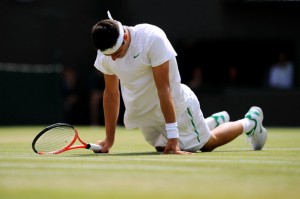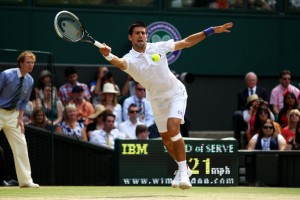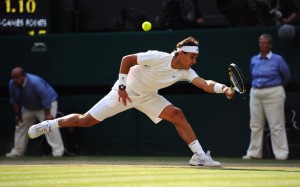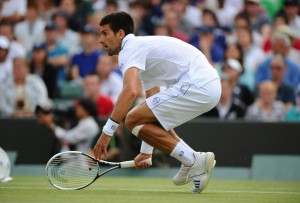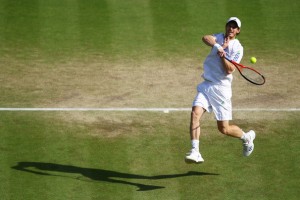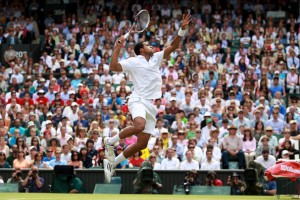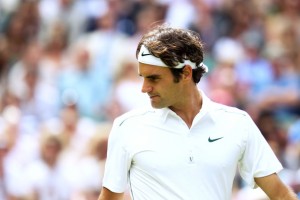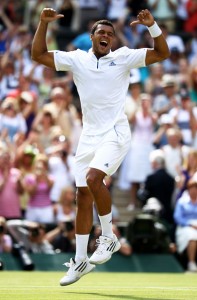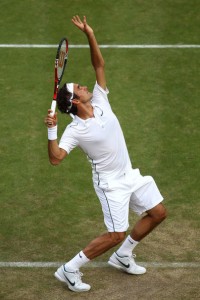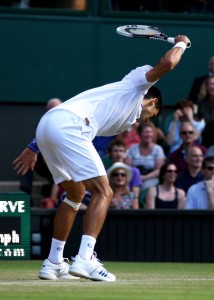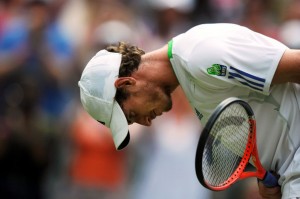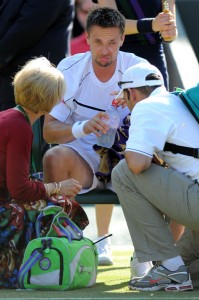Davis Cup, World Group Quarterfinals
In the end, it all worked out more or less as expected, although sadly not as hoped-for. On paper, it appeared as though the Davis Cup World Group quarterfinals might produce some tight and exciting ties, in much the same way the previous round mostly hadn’t. So much for on paper, which doesn’t know as much about tennis as it thinks it does.
Then again, you didn’t need to know much to predict that both Serbia and Argentina would amble through unscathed, and that if a rubber was going to be dropped, it would mostly likely be in the doubles, which in this era of ‘doubles-specialists’ – the red-headed violists of the pro circuit – can make the middle day a veritable crap shoot. 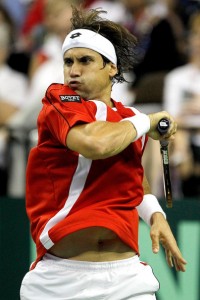 Your team might feature the Bryan brothers, but if you’re faced with, say, Federer and Wawrinka, you can quickly discover that even the most accomplished combination only flourishes by the grace of a packed singles season. Think back to Indian Wells, when the singles players opted in. Nevertheless, the Bryans this weekend only had to face Verdasco and Lopez – who are not ‘specialists’ but are ‘special’ – while the Swiss pair managed to drop a set in seeing off a gallant Portugal. But I’m getting ahead of myself, and I don’t mean to belittle the ever-dependable Bryans, around whom the USA’s entire Davis Cup effort is justifiably based, regardless of what a fading Andy Roddick might still believe.
Your team might feature the Bryan brothers, but if you’re faced with, say, Federer and Wawrinka, you can quickly discover that even the most accomplished combination only flourishes by the grace of a packed singles season. Think back to Indian Wells, when the singles players opted in. Nevertheless, the Bryans this weekend only had to face Verdasco and Lopez – who are not ‘specialists’ but are ‘special’ – while the Swiss pair managed to drop a set in seeing off a gallant Portugal. But I’m getting ahead of myself, and I don’t mean to belittle the ever-dependable Bryans, around whom the USA’s entire Davis Cup effort is justifiably based, regardless of what a fading Andy Roddick might still believe.
That the USA went down to Spain on a slick indoor court in Austin tells you that a rock-solid doubles combination is not enough, which I suppose we all knew anyway. At some point, your star singles players – both in the top ten – will have to put up. As it was, Fish and Lopez ground out a flaccid five-setter that was nothing like as epic as the scoreline suggests (8-6 in the fifth to the Spaniard), while Roddick managed to blow about 78 set points against David Ferrer, and then, from a set down, he treated the remainder of the match as a very long coda. His two double-faults to end were a nice touch, both a double-bar line and a sly nod to Ferrer’s overall efficacy on return. At least, I think that’s what he was getting at. I had suggested coming in to this tie that Ferrer was the joker in the pack here, and that it would be his performance that would largely determine the outcome. It did, so that’s nice for him, and for me. It is Spain’s first Davis Cup victory on US soil since about 1972, or something, and they did it without Nadal. They will next face France, and if the Austin surface probed the upper edge of permissible speeds, and then the molasses the Spanish will inflict on the French might strain belief.
In other news, word came through some days ago that Gael Monfils has split with Roger Rasheed, which perhaps explains why he looked so decisive on court against the Germans. Even more astoundingly, there are reports that Rasheed has already hooked up with Andy Murray. Now there’s a contrast, between the ghost-white, lanky and straight-talking Scot and the outstandingly bicepped and bronzed Australian, who so bewitches us with his neologistic pep-speak at any opportunity. Whatever his other faults, Murray is fairly no-nonsense, and Rasheed, if his commentary is anything to go by, talks nothing but. Something might go haywire in translation, which is about the last thing the Scot needs.




